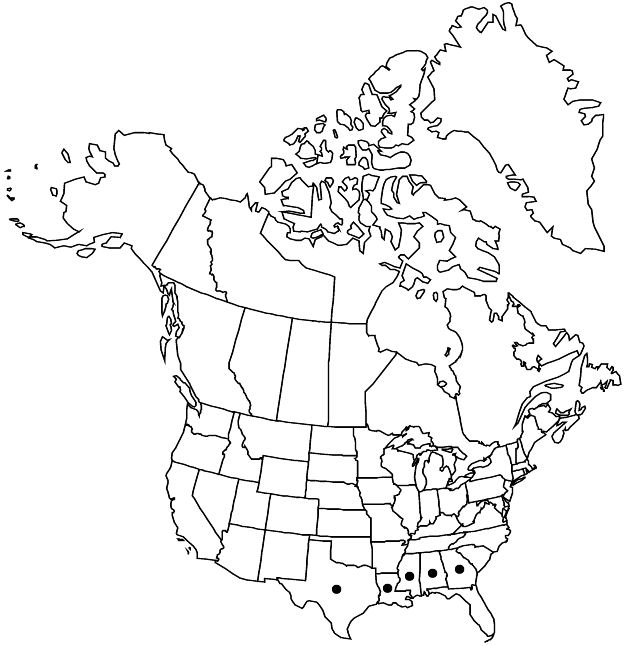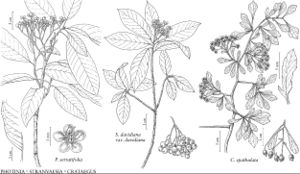Photinia serratifolia
Blumea 21: 424. 1973.
Plants 40–60(–120) dm. Leaves persistent; petiole 20–40 mm, villous adaxially when young, glabrescent; blade narrowly elliptic to oblong, obovate-elliptic, or narrowly obovate, (6–)9–20 × 3–6.5 cm, coriaceous, base rounded or broadly cuneate, margins sharply serrate to rarely inconspicuously toothed or entire, lateral veins 20–30 pairs, apex acuminate, abaxial surfaces slightly villous along veins when young, quickly glabrescent. Inflorescences 10–18 cm diam. Pedicels without lenticels. Flowers 6–8 mm diam.; petals suborbiculate, 3–4 mm, glabrous or villous.
Phenology: Flowering late Mar–Apr.
Habitat: Fencerows, thickets, disturbed sites
Elevation: 20–200 m
Distribution

Ala., Ga., La., Miss., Tex., Asia.
Discussion
Four varieties of Photinia serratifolia are recorded in China; var. serratifolia occurs in the flora area and has leaf margins prominently serrate, entire only near the base (versus entire to shallowly and inconspicuously serrate in other varieties). Cultivars have been developed, however, differing in growth form, coloration, and leaf margins, and a formal identification to variety is problematic. Chinese photinia can grow larger than P. ×fraseri (‘red tip’) or Japanese photinia, and flowers appear before those of either.
Selected References
None.
